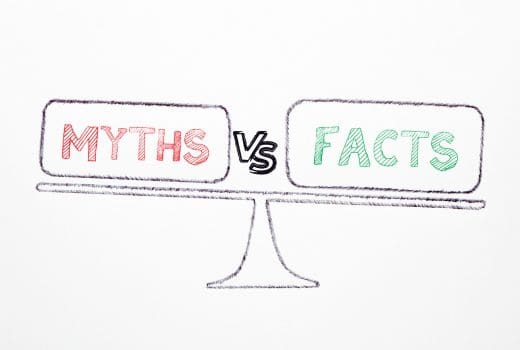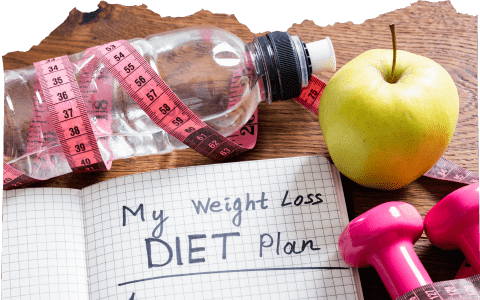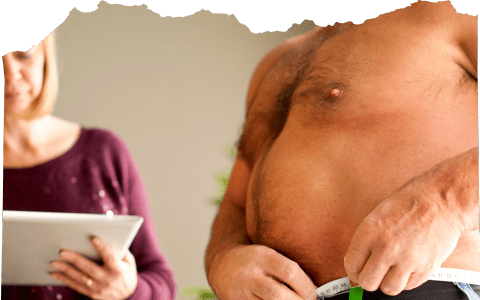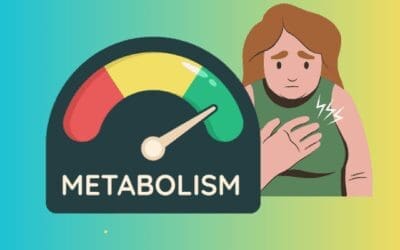Let’s face it, stepping on the scale and seeing a higher number than you’d like can be frustrating at any age. But after 40, it can feel downright discouraging. Maybe the weight seems to creep on a little easier, or those old workout routines don’t quite deliver the same results.
The good news? Shedding kilograms after 40 is absolutely achievable! It might take some adjustments to your approach, but forget about crash diets and intense exercise programs that leave you feeling burnt out. This guide is all about sustainable weight loss – healthy habits you can stick with for the long haul, feeling better and looking your best along the way.
Understanding Your Body After 40

Our bodies are amazing machines, but like any machine, they work a little differently over time. Here’s what’s happening inside:
** metabolism (muh-tab-uh-liz-um):** This is the process your body uses to turn food into energy. Think of it like an engine burning fuel. While it does slow down slightly as we age, it’s still very much in our control!
Muscle Mass Matters: Muscle burns more calories than fat, even at rest. Unfortunately, muscle mass naturally declines as we age. This loss of muscle mass, sometimes called sarcopenia (sar-ko-pee-nee-uh), can contribute to a slower metabolism and make weight loss more challenging. Strength training is key to building and maintaining muscle, giving your metabolism a boost.
Hormonal Hurdles: Women in particular experience hormonal changes around perimenopause and menopause that can affect weight management. Don’t despair! These changes are normal, and healthy lifestyle choices can still make a big difference.
Ditch the Fads & Embrace Sustainability
Crash diets and juice cleanses might seem tempting, but they’re not sustainable solutions for long-term weight loss. Let’s focus on building healthy habits you can enjoy for life!

Healthy Habits for Weight Loss
Whole Foods First: Fill your plate with a rainbow of fruits and vegetables, fiber-rich whole grains like brown rice or quinoa, and lean protein sources like chicken, fish, or beans. These foods are packed with nutrients that keep you feeling full and energized.
Protein Power: Including protein at every meal and snack is a game-changer for weight loss. Protein takes longer to digest than carbs, keeping you feeling satisfied and helping control cravings. Lean protein sources like chicken, fish, beans, and lentils are all excellent choices. If you were wondering how much protein you need, this may be an interesting read for you.
Portion Patrol: Our eyes are often bigger than our stomachs! Use smaller plates, learn about healthy portion sizes, and focus on savoring each bite.
Fiber is Your Friend: Fiber keeps your digestive system happy, helps you feel fuller for longer, and even helps regulate blood sugar levels. Load up on fruits, vegetables, and whole grains to get your daily dose. Just how much fiber do you need – we got you covered!
Hydrate, Hydrate, Hydrate! Water is essential for overall health and can also help curb cravings. Aim to drink plenty of water throughout the day.
Healthy Fats are Here to Stay: Not all fats are created equal! Healthy fats like those found in avocados, nuts, and olive oil can help you feel satisfied and aid in nutrient absorption. Include them in moderation as part of balanced diet.
Plan to Succeed: Meal planning and prepping can be a lifesaver when you’re short on time. Take an hour on the weekend to cook some healthy meals and chop up veggies for snacks. A little planning goes a long way!
Find Your Why: What motivates you to live a healthier lifestyle? More energy? Feeling better in clothes? Having a clear reason “why” can help you stay on track when the going gets tough.
Move Your Body, But Make it Fun!
Exercise doesn’t have to be a chore!
Finding activities you actually enjoy will make you more likely to stick with them in the long run. Think brisk walks in nature, swimming laps at the pool, dancing to your favorite music, cycling outdoors, or even trying a new group fitness class.
Strength Training Superstar
Strength training isn’t about becoming a bodybuilder, it’s about building and maintaining muscle mass. Muscle burns more calories than fat, even at rest, so the more muscle you have, the higher your metabolism will be. This translates to burning more calories throughout the day, even when you’re not exercising! Strength training also helps keep your bones strong and can improve your posture and balance.
The best part? You don’t need a fancy gym membership to reap the benefits of strength training. Here are some affordable options you can try at home:
- Bodyweight Exercises: Exercises like squats, lunges, push-ups, and planks are a great way to build strength without any equipment. You can find plenty of free bodyweight workout routines online or in fitness apps.
- Resistance Bands: Resistance bands are a simple and affordable way to add resistance to your workouts. They come in various strengths and can be used for a wide variety of exercises targeting different muscle groups.
Consistency is Key
Even small amounts of daily activity are much better than long periods of sitting. Aim for at least 30 minutes of moderate-intensity exercise most days of the week. Don’t be discouraged if you can’t fit in a full 30 minutes at once. Break it up into smaller chunks throughout the day.
Take a brisk 15-minute walk in the morning and another in the evening, do some bodyweight exercises during your lunch break, or take the stairs instead of the elevator whenever possible. Every bit counts!
The Power of NEAT
NEAT stands for Non-Exercise Activity Thermogenesis. In simpler terms, it’s the calories you burn through everyday movement that’s not planned exercise. These are all those little things you do throughout the day that add up to a significant calorie burn. Here are some ways to boost your NEAT:
- Take the stairs instead of the elevator.
- Park further away from the store and walk a bit extra.
- Do some light gardening or housework.
- Pace while you’re on the phone.
- Fidget! Studies have shown that even fidgeting can help burn a few extra calories.
Find ways to sneak in more movement throughout your day to boost your calorie burn and get closer to your weight loss goals!
Beyond the Scale: Celebrating Non-Scale Victories

The scale isn’t the only measure of success! Weight loss is a journey, and there will be ups and downs along the way. But here’s the thing: there are tons of victories to celebrate beyond that number on the scale.
Feeling Fantastic: One of the best things about getting healthy is feeling amazing! Pay attention to how you feel throughout the day. Do you have more energy to tackle your daily tasks? Are you sleeping better at night? These are all fantastic non-scale victories to celebrate!
Strength Superstar: Strength training isn’t just about the number on the scale. As you build muscle, you’ll notice yourself feeling stronger. Simple tasks like carrying groceries or climbing stairs become easier. You’ll also improve your balance and coordination, reducing your risk of falls. Strength training can even improve your mood and help you manage stress.
Confidence Booster: Taking charge of your health and making positive changes is empowering! As you see and feel the results of your efforts, your confidence will naturally soar. You’ll feel better in your own skin and be more likely to stick with your healthy lifestyle choices.
Making it Work for You
Making healthy changes doesn’t have to break the bank! Here are some ideas to keep your fitness routine affordable:
Free Fitness Fun
There’s a wealth of free workout videos available online. Find something you enjoy, from yoga and Pilates to dance workouts or high-intensity interval training. Bodyweight exercises like squats, lunges, and push-ups require no equipment and can be done anywhere. Many local parks and trails offer beautiful scenery and free space for walking, running, biking, or even bodyweight exercises outdoors.
Find Your Support System
Having a workout buddy can be a great motivator. Partner up with a friend or family member for walks, bike rides, or even online workout classes together. Support groups can also be a valuable resource for sharing experiences, tips, and encouragement. Consider joining a weight loss or healthy living group in your community or online.
Listen to Your Body
This is your journey, and it’s important to respect your body’s needs. Don’t push yourself too hard, especially when you’re just starting out. Take rest days when you need them, and listen to your body’s signals. Soreness is normal, but pain is not. If you experience any pain during exercise, stop and consult with a doctor.
Small Swaps, Big Results
Sustainable weight loss is all about making small, healthy changes to your daily routine. Here are a few ideas:
- Take the stairs whenever possible.
- Park further away from your destination and walk the extra distance.
- Downsize your plates. Studies show that people tend to eat more food when they have larger plates.
- Swap sugary drinks for water or unsweetened tea.
- Skip the second helping. Notice when you’re feeling comfortably full and stop eating.
These small changes add up over time and can make a big difference in your weight loss journey.
Benefits of weight loss after 40
- Reduced risk of chronic diseases: According to a study published in the New England Journal of Medicine, losing just 5-10% of your body weight can significantly reduce your risk of developing chronic diseases such as type 2 diabetes, heart disease, and certain types of cancer.
- Improved joint health: Carrying excess weight can put a lot of strain on your joints, leading to pain and discomfort. Losing weight can help alleviate this pain and improve joint health, according to a study published in Arthritis Care & Research.
- Better sleep: Carrying extra weight can make it difficult to get a good night’s sleep. Losing weight can help improve sleep quality and reduce the risk of sleep apnea, according to a study published in the International Journal of Obesity.
- Increased energy: Losing weight can give you more energy to enjoy your favorite activities. According to a study published in Obesity Research, weight loss can improve physical function and reduce fatigue in older adults.
- Improved mental health: According to a study published in JAMA Psychiatry, losing weight can improve mood and reduce symptoms of depression and anxiety in older adults.
Myths About Weight Loss After 40

There are a lot of myths and misconceptions out there when it comes to weight loss, especially for people over 40. Here are some of the most common ones, along with the truth behind them:
Myth: It’s impossible to lose weight after 40.
Fact: While it may be more challenging to lose weight after 40, it’s not impossible. By incorporating healthy lifestyle habits, such as regular exercise and a balanced diet, you can achieve your weight loss goals.
Myth: You have to cut out all carbs to lose weight after 40.
Fact: Carbohydrates are an important part of a healthy diet and should not be eliminated altogether. Instead, focus on eating complex carbohydrates, such as whole grains, fruits, and vegetables, and limit simple carbohydrates, such as white bread and sugary foods.
Myth: You have to exercise for hours a day to lose weight after 40.
Fact: While regular exercise is important for weight loss, you don’t have to spend hours at the gym each day. Incorporating short bursts of high-intensity exercise or resistance training can be just as effective.
Myth: You can’t build muscle after 40.
Fact: While it may be more difficult to build muscle mass after 40, it’s not impossible. Resistance training and proper nutrition can help build and maintain muscle mass.
Myth: You can spot reduce fat from certain areas of the body
Fact: Unfortunately, you can’t target fat loss to specific areas of the body. Instead, focus on overall weight loss through a healthy diet and exercise.

FAQs:
Q: What are some of the challenges of losing weight after 40?
A: There are a few challenges that people often face when trying to lose weight after 40. These include:
- A slower metabolism
- A decrease in muscle mass
- Changes in hormones
- Increased stress levels
Q: What are some of the benefits of losing weight after 40?
A: There are many benefits to losing weight after 40. These include:
- Improved health and well-being
- Reduced risk of chronic diseases
- Increased energy levels
- Improved self-esteem
Q: What are some of the things I can do to increase my chances of success in losing weight after 40?
A: There are a few things you can do to increase your chances of success in losing weight after 40. These include:
- Setting realistic goals
- Making gradual changes to your diet and lifestyle
- Finding a support system
- Getting regular exercise
- Managing stress
Q: Can I still eat carbs and lose weight after 40?
A: Yes, you can still eat carbs and lose weight. Focus on whole, nutrient-dense carbs like fruits, vegetables, and whole grains.
Q: Is it possible to lose weight without exercising?
A: While exercise is important for overall health, it is possible to lose weight without exercising by focusing on a healthy diet and creating a calorie deficit.
Q: How much exercise do I need to lose weight?
A: The amount of exercise needed for weight loss can vary depending on individual factors like age, weight, and activity level. Aim for at least 150 minutes of moderate-intensity exercise per week.
Q: Will strength training make me bulky?
A: No, strength training is unlikely to make you bulky. Instead, it can help you build muscle mass and increase your metabolism, making it easier to burn calories and lose weight.
Q: Is it too late to start exercising and losing weight after 40?
A: No, it is never too late to start exercising and losing weight. In fact, regular exercise and a healthy diet can help you maintain your health and weight.
Q: Is it necessary to do cardio for weight loss after 40?
A: While cardio can be helpful for burning calories and promoting weight loss, it’s not necessary for everyone. Resistance training and other forms of physical activity can also be effective for weight loss.
Q: How much weight can I expect to lose per week?
A: The amount of weight you can expect to lose per week depends on various factors, such as your starting weight, calorie intake, and physical activity level. A safe and sustainable rate of weight loss is around 0.5-1 kg per week.
Q: Should I try a fad diet for weight loss after 40?
A: Fad diets are not sustainable or healthy for long-term weight loss and can actually be harmful to your health. It’s best to focus on a balanced and healthy diet that includes a variety of nutrient-dense foods.
Q: How can I stay motivated during my weight loss journey?
A: Staying motivated during weight loss can be challenging, but setting realistic goals, tracking your progress, and seeking support from friends, family, or a health professional can help you stay on track. It’s also important to celebrate your successes along the way, no matter how small they may be.
Losing weight after 40 can be challenging, but it’s not impossible. By debunking myths, understanding the science behind weight loss, and implementing sustainable strategies, you can achieve your weight loss goals and improve your overall health and well-being.
Remember to focus on progress, not perfection, and celebrate your successes along the way. With dedication, patience, and a positive mindset, you can create a healthier, happier, and more vibrant version of yourself.






